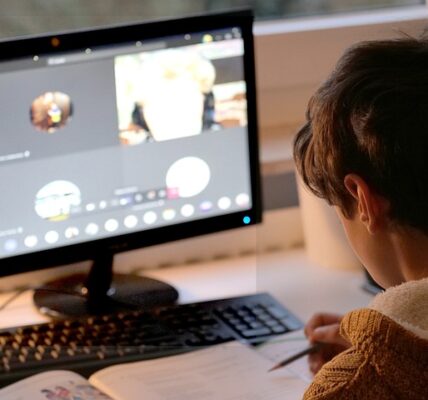Guiding Children on Safe Internet Practices
The internet has become an integral part of our daily lives, and children are no exception. With the vast amount of information available online, it’s essential to teach kids safe internet practices from a young age. As a parent or guardian, you play a significant role in shaping their digital habits and ensuring they navigate the online world safely.
In today’s digital age, it’s crucial to strike a balance between screen time and real-life activities for children. Overexposure to screens can lead to a range of negative effects on their physical and mental health, social skills, and academic performance. However, with proper guidance, kids can learn to use the internet responsibly and reap its benefits.
In this article, we’ll discuss the importance of teaching kids responsible tech usage, balancing screen time with real-life activities, and providing them with the necessary tools and resources to stay safe online.
Teaching Kids Responsible Tech Usage is a vital aspect of internet safety. It involves setting clear boundaries, monitoring their online activities, and educating them about digital citizenship. By doing so, you can help kids develop healthy habits and avoid potential pitfalls such as cyberbullying, online predators, and excessive screen time.
Here are some steps you can take to teach your child responsible tech usage:
* Set a good example: Children learn by observing their parents’ behavior, so make sure you’re modeling responsible internet use yourself.
* Establish rules and guidelines: Create a set of rules that outline what is and isn’t acceptable online. Make sure your child understands the consequences of breaking these rules.
* Monitor their activity: Keep an eye on what your child is doing online, especially when they’re using devices outside of school or home.
* Educate them about digital citizenship: Teach your child about the importance of respecting others’ privacy, not spreading rumors, and being kind online.
Balancing Screen Time with Real-Life Activities for Children is also essential. It’s crucial to find a balance between screen time and real-life activities to ensure your child gets the most out of their online experience.
Here are some ways to balance screen time with real-life activities:
* Encourage outdoor play: Regular outdoor play can help reduce the amount of screen time your child needs.
* Engage them in hobbies: Help your child find a hobby or activity they enjoy, such as reading, drawing, or playing sports.
* Plan family outings: Organize regular family outings to parks, museums, or other places that promote social interaction and learning.
* Set screen-free zones: Designate certain areas or times of the day as screen-free to encourage physical activity and relaxation.
Online Safety (for Teens) | Nemours KidsHealth is a valuable resource for kids aged 13-19 who want to learn more about internet safety. The article provides tips on how to avoid online predators, how to protect yourself from cyberbullying, and what to do if you’re ever in an uncomfortable situation online.
Online Safety and Privacy Resources – National Cybersecurity Alliance is another great resource for kids and parents alike. The website offers a range of tools, guides, and tips on how to stay safe online, from password management to social media etiquette.
In conclusion, teaching children safe internet practices is essential for their online safety and well-being. By setting clear boundaries, monitoring their activity, educating them about digital citizenship, and balancing screen time with real-life activities, you can help kids develop healthy habits and avoid potential pitfalls. Remember to stay informed about the latest online threats and trends, and seek out resources that can help your child navigate the digital world safely.
By taking proactive steps now, you can ensure a bright future for your child in the online world.




